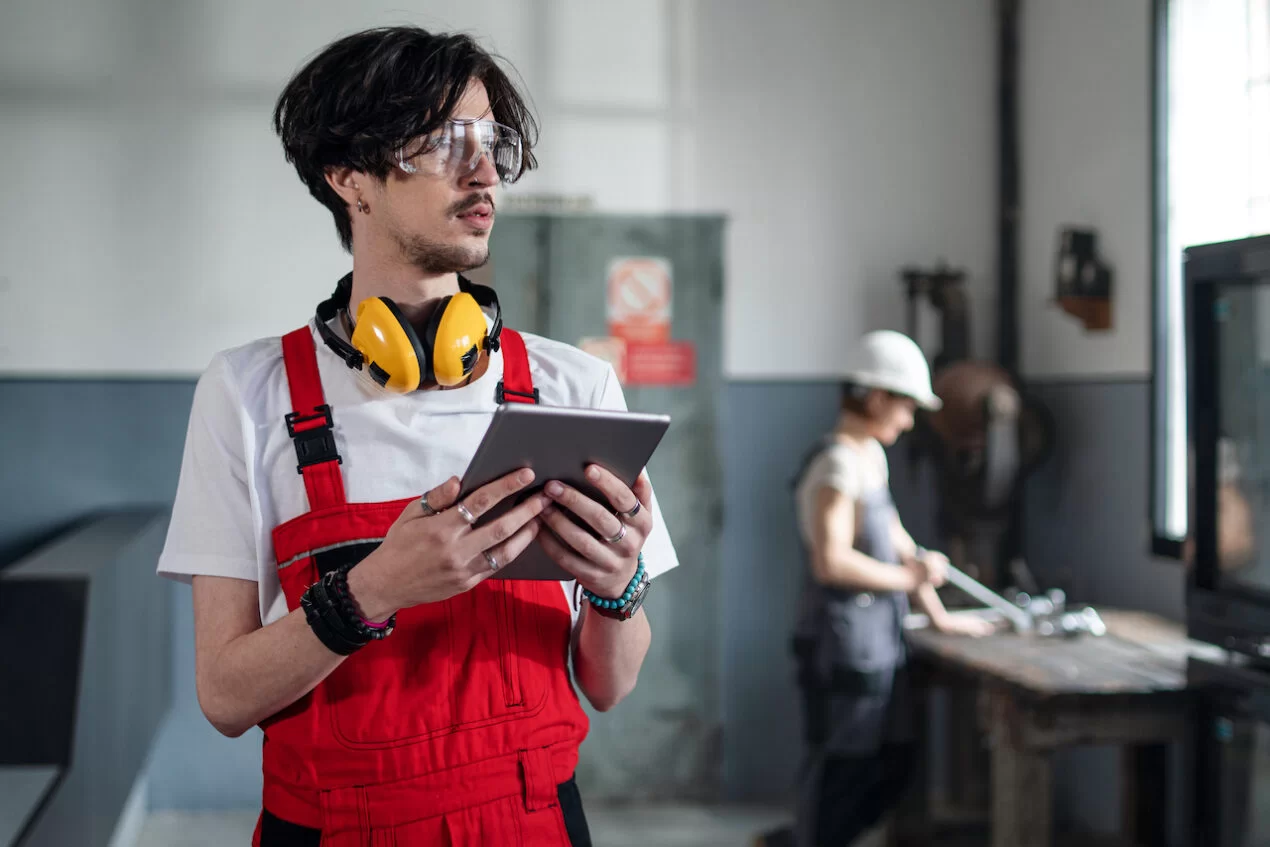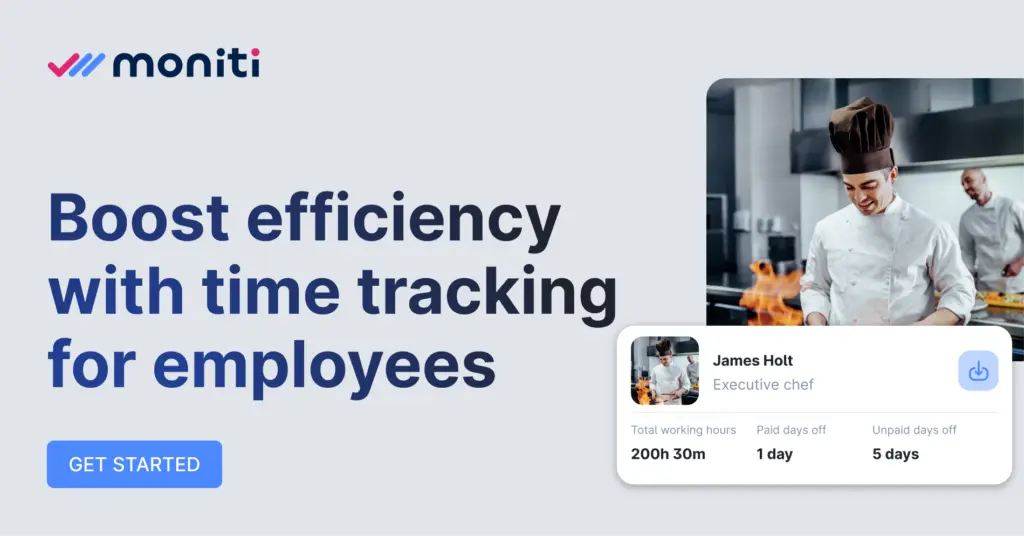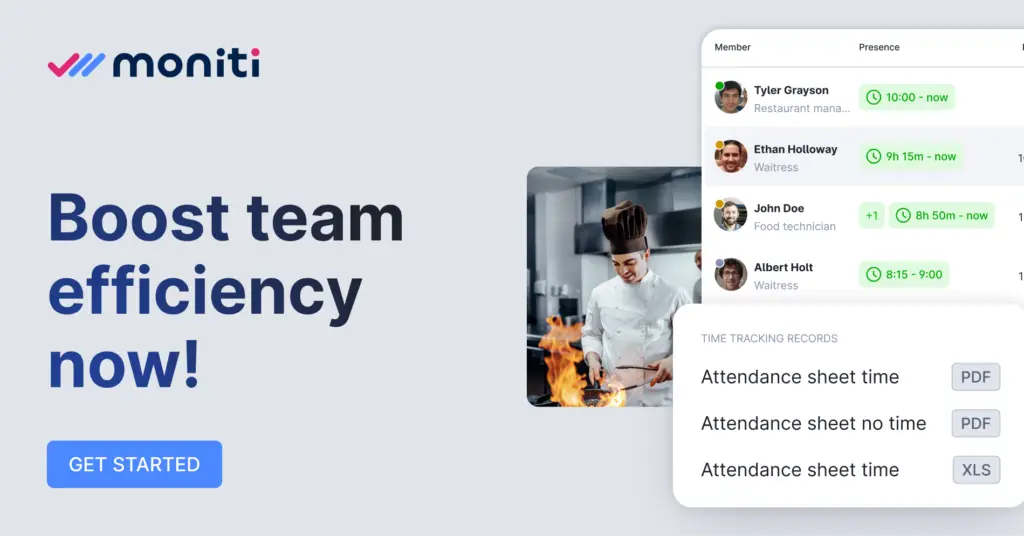Table of Contents
How ghost kitchens and restaurants benefit from task management and time tracking for eployees?
The food industry is evolving rapidly, with ghost kitchens and traditional restaurants serving as two distinct yet interconnected models. While restaurants operate with physical dining spaces, ghost kitchens focus solely on food preparation for delivery or pickup, bypassing the need for a front-of-house setup. Despite their differences, both models share a common challenge: the need for efficient operations.
Task management and time tracking for employees have emerged as powerful tools to address these challenges. By streamlining workflows, improving communication, and maximizing productivity, these apps enable both ghost kitchens and restaurants to thrive in a competitive market. In this article, we’ll explore the unique operational needs of ghost kitchens and restaurants, and how adopting task management and time tracking tools can boost their efficiency.
1. Operational differences:
ghost kitchens vs. restaurants
To understand how efficiency tools can help, it’s essential to first identify the distinct operational dynamics of ghost kitchens and traditional restaurants:
- Ghost Kitchens:
- Operate without dining areas, focusing entirely on delivery and takeaway.
- Require seamless coordination between kitchen staff and delivery platforms.
- Often run multiple virtual brands under one roof, increasing the complexity of menu and order management.
- Restaurants:
- Handle both dine-in and takeaway customers, balancing front-of-house and back-of-house operations.
- Need strong communication between servers, kitchen staff, and management.
- Face high pressure during peak hours due to in-person dining expectations.
Both models rely heavily on efficient workflows and precise time management to meet customer expectations while minimizing costs.
2. Improving time management with tracking for employees
Time tracking apps enable teams to optimize their productivity by monitoring how long specific tasks take. Key benefits include:
- Identifying Bottlenecks: Analyze which tasks take the longest and adjust workflows to improve efficiency.
- Scheduling Optimization: Use historical data to predict peak hours
- designated timeframes. This accountability not only boosts productivity but also fosters a culture of responsibility within the team.
For ghost kitchens, time tracking apps can ensure that orders are prepared and dispatched quickly, reducing delivery delays and improving customer satisfaction. In restaurants, these apps help streamline dine-in and takeaway processes, minimizing wait times for customers and maximizing table turnover.
If you want to find out more, you should also read this article How to optimize ROI with accurate time tracking?
3. The role of task management apps in efficiency
Task management apps simplify operations by organizing workflows, assigning responsibilities, and ensuring accountability. For both ghost kitchens and restaurants, these apps offer:
- Clear task assignments: Assign specific tasks (e.g., prep work, cleaning, packing) to individual team members, ensuring everyone knows their role.
- Priority management: Highlight urgent tasks, such as fulfilling time-sensitive orders or resolving customer complaints.
- Real-time updates: Provide live updates to track task completion, reducing confusion and delays.
In ghost kitchens, task management apps help coordinate multiple brands and menus, ensuring smooth operations despite high order volumes. For restaurants, they streamline interactions between the kitchen and front-of-house, creating a more seamless dining experience.
4. Enhancing communication across teams
Both ghost kitchens and restaurants rely on effective communication to ensure smooth operations. Task management and time tracking apps often include built-in messaging tools, enabling:
- Instant updates: Communicate changes to orders, schedules, or priorities in real time.
- Collaborative problem-solving: Allow team members to share updates or flag issues quickly, minimizing disruptions.
- Centralized communication: Keep all conversations in one place, reducing the risk of miscommunication across teams.
In ghost kitchens, these features facilitate better coordination between kitchen staff and delivery drivers. In restaurants, they ensure that front-of-house and kitchen staff are always aligned, even during peak hours.
5. Reducing wasted time
and resources
Inefficiencies in task management can lead to wasted time and resources, which directly impact profitability. Task and time tracking apps help:
- Minimize downtime: Identify periods of inactivity and reassign staff to productive tasks during slower hours.
- Avoid overstaffing or understaffing: Use data insights to schedule the right number of team members for any given shift.
- Monitor usage: Integrate invoicing software for efficiency
Streamline operations by integrating invoicing software to track supply usage efficiently and reduce waste. Align usage with billing, and improve overall transparency.
For ghost kitchens, this means tighter control over food costs and faster order fulfillment. For restaurants, it helps balance operational costs with the dining experience.
6. Leveraging data
for continuous improvement
One of the most valuable features of task management and time tracking apps is their ability to collect data on operations. This data can be used to:
- Identify bottlenecks
Understand which tasks take the longest and identify operational bottlenecks. Gain insights into delays, inefficiencies, and areas that need improvement to streamline workflows. - Optimize processes: Continuously refine workflows to improve speed and efficiency.
- Set performance benchmarks: Use data insights to establish realistic goals for staff and track progress over time.
For ghost kitchens, data-driven decision-making can help scale operations or introduce new virtual brands. Restaurants can use these insights to enhance customer experiences and improve service quality.
7. Task management apps
for scalability
Scalability is a critical factor for both ghost kitchens and restaurants. As they grow, managing larger teams and higher order volumes becomes increasingly challenging. Task management and time tracking apps provide scalable solutions by:
- Automating repetitive tasks: Reduce the burden of manual scheduling or reporting.
- Simplifying multi-location management: Monitor and manage multiple kitchens or restaurants from a single dashboard.
- Streamlining onboarding: Train new staff more effectively with clear task assignments and time expectations.
For ghost kitchens, scalability often involves managing several virtual brands under one roof. Restaurants, on the other hand, may need to expand their operations to multiple locations or increase seating capacity. In both cases, these apps ensure that growth does not compromise efficiency.
Moniti as Your
efficiency ally
Managing a restaurant or ghost kitchen requires more than culinary expertise—it requires tools that empower your team to work effectively and efficiently. Attendance apps, once seen as simple tools for tracking employee time, are now indispensable for modern food service management.
One standout example is Moniti.app—a feature-rich platform that combines task scheduling and real-time tracking, into a single solution. Moniti ensures that every shift runs smoothly, every resource is used effectively, and every customer experience is optimized.
By integrating Moniti, you’ll not only enhance efficiency but also create a well-organized, forward-thinking approach to food service management. Whether you’re running a traditional restaurant or a high-volume ghost kitchen, the right tools can make all the difference.
Why use time tracking
for employees in restaurants
or ghost kitchens?
Ghost kitchens and traditional restaurants operate in different environments, but both rely on efficiency to thrive in the competitive food industry. Task management and time tracking apps have become indispensable tools for streamlining operations, optimizing workflows, and improving team performance.
By implementing these apps, ghost kitchens can handle high volumes of delivery orders more effectively, ensuring faster turnaround times and satisfied customers. Restaurants, meanwhile, can enhance the dining experience while keeping operational costs in check.
Whether you’re running a ghost kitchen or a full-service restaurant, adopting a task management and time tracking app is a smart investment. These tools not only help address immediate operational challenges but also provide the foundation for long-term growth and success in the ever-evolving food industry.





